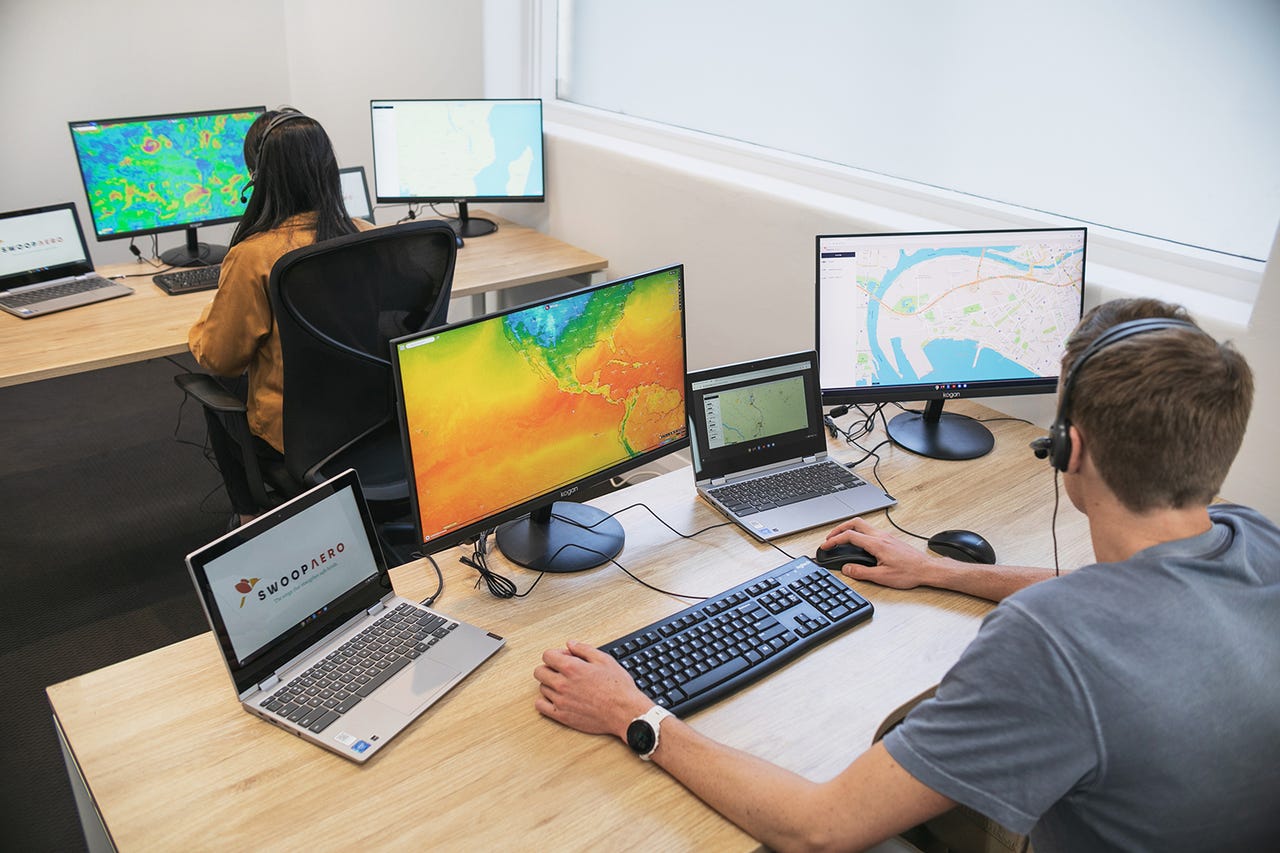Swoop Aero gets green light from Australian aviation authority for drone centre


Drone company Swoop Aero has been given the thumbs up by Australia's Civil Aviation and Safety Authority (CASA) to operate its drone logistics remote operations centre (ROC) at the company's campus in Port Melbourne Victoria.
According to the company, the approval means the company will be able to "operate like an international airliner" and centralise its operations in one facility, including remotely monitoring its global operations across Oceania, Africa, and Europe, as well as pilot up to five drones by a single pilot beyond the physical view of the aircraft through a web interface.
"The ROC will serve as an important function to foster complete visibility of drone operations. From a regulatory perspective, the ROC ensures Swoop Aero is meeting the highest aviation and safety standards at a global level," Swoop Aero chief regulatory officer Zachary Kennedy said.
Swoop Aero added that in the coming months, it plans to increase its remote pilot operation by a single pilot to 30 drones, which the company touted would put it on track to achieving its goal of providing drone logistics services to one billion people by 2030.
The company added that the ROC will also continue to operate as an educational resource to train and upskill new pilots.
Since last year, Swoop has been trialling the use of its drones in Queensland and Victoria to deliver healthcare services to remote communities. The company expects that following these trials, it will receive approval to roll out its services in each state by the end of the year.
The trials are off the back of existing work Swoop has been doing in Malawi, the Democratic Republic of the Congo, Mozambique, and Vanuatu, where it provides medical supplies including vaccines for malaria and tuberculosis, penicillin, anti-malarial and anti-venom medications, and HIV/AIDS testing kits from healthcare centres to remote villages. On the return trip, the drones are also often carrying tests for tuberculosis and other blood samples.
Swoop Aero CEO Eric Peck previously told ZDNet that the company hopes it can provide the same service to rural and remote parts of Indonesia and Australia, especially in Indigenous communities.
During the Amazon Web Services (AWS) Australia and New Zealand Summit on Thursday, Peck detailed Swoop Aero's drone network is underpinned by a combination of AWS cloud and machine learning technology, which enables the company to interact with air traffic control, unmanned traffic management systems, and manned aircraft in the same vicinity to ensure the drones can autonomously and accurately land safely when they are deployed.
Peck added the company has also developed a hardware and software digital twin of its fleet so the company has complete oversight of every aircraft and each of their 17 modules.
"We maintain an aircraft digital shadow in the cloud and throughout the aircraft's lifecycle, every module is tracked and its health monitored from manufacturing, through service, through to end-of-life by matching specific flight data and training that data using machine learning," he said.
"This fleet digital twin is managed through a mix of Amazon AWS IoT Device Shadow Service and Amazon Aurora PostgreSQL database, with aircraft performing automatic checks against their shadow and fleet managers accessing insights through online applications.
"Leveraging the digital shadow, we can trigger a remote update of every single chip running on every aircraft for an entire fleet simultaneously. It's as simple as the aircraft booting up in the morning and announcing there'll be a five minute update before we can start flying for that day. This means from a central point in the AWS cloud, we can manage and update our entire global fleet."
Related Coverage
- Queensland government expands police air fleet with new drone trials
- CASA to trial automated digital approvals for commercial drone operators
- QUT researchers using AI-enabled drones to identify koalas in bushfire affected areas
- More shark-spotting drones and drumlines added to NSW coastlines for AU$21.4 million